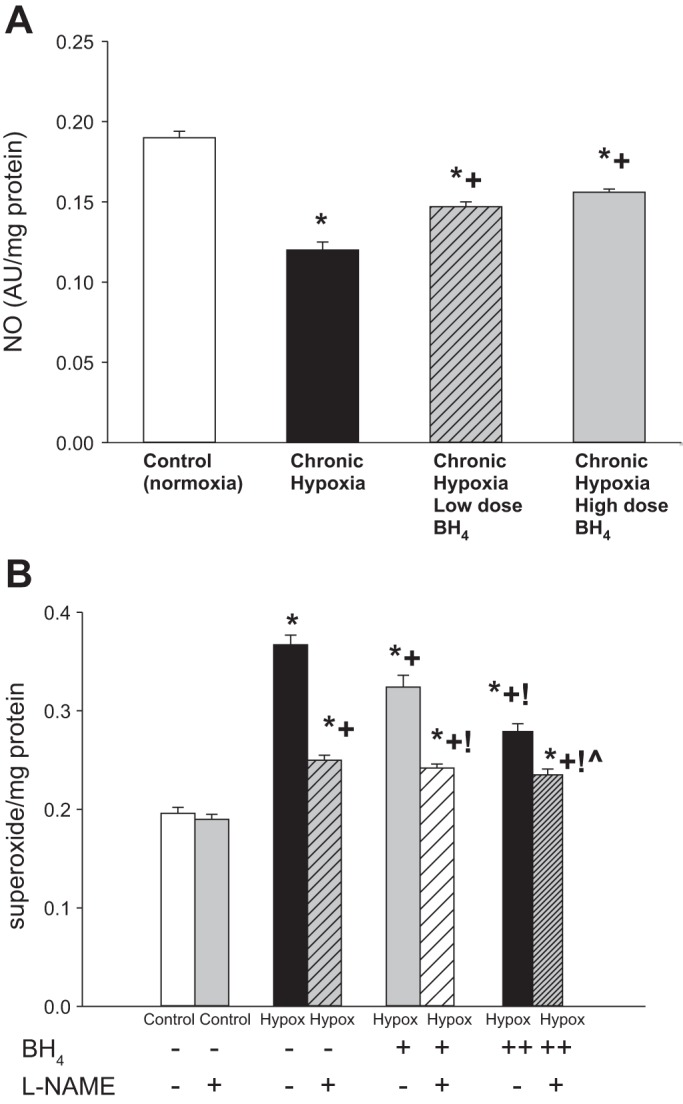Fig. 5.

A: nitric oxide (NO) production by small pulmonary arteries from control (normoxic) and chronically hypoxic piglets. NO production was greater for small pulmonary arteries from normoxic control piglets (n = 7) than all groups of hypoxic piglets. Small pulmonary arteries from both low- (n = 4) and high-dose (n = 6) oral BH4 (sapropterin dihydrochloride)-treated groups of piglets had greater NO production than untreated (n = 7) hypoxic animals. B: superoxide production by small pulmonary arteries from control (normoxic) and chronically hypoxic piglets. Superoxide production was less for small pulmonary arteries from normoxic control piglets (n = 6) than all groups of hypoxic piglets. Small pulmonary arteries from both low- (n = 4) and high-dose (n = 6) oral BH4-treated groups of piglets had less superoxide production than untreated (n = 6) hypoxic animals. Superoxide production was less for pulmonary arteries from high-dose compared with low-dose oral BH4-treated chronically hypoxic piglets. Superoxide production was unchanged by ex vivo l-NAME (10−4 M) treatment in small pulmonary arteries from control (normoxic) piglets (n = 6). Ex vivo treatment with l-NAME reduced superoxide generation in small pulmonary arteries from all three groups of hypoxic piglets. Values are means ± SE. Different from *control (normoxic), +untreated chronic hypoxic, !low-dose BH4-treated chronic hypoxic, and ĥigh-dose BH4-treated chronic hypoxic: P < 0.05; ANOVA with post hoc comparison test.
